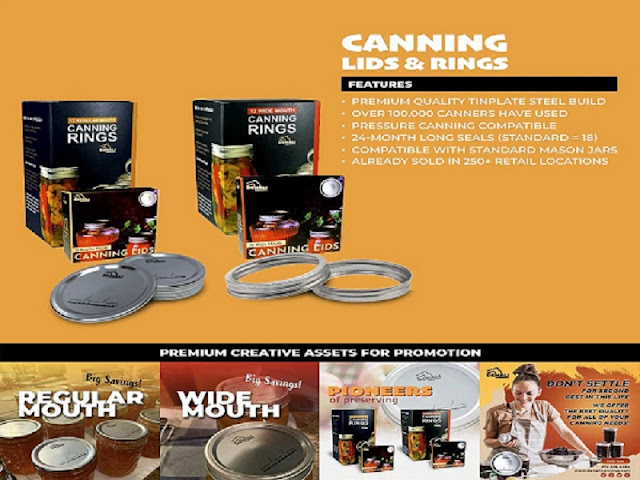A Guide To Preserving Food For Long-Term Enjoyment
Food preservation by canning has become essential when convenience frequently precedes long-term sustainability. Canning is a traditional food preservation technique that extends the shelf life of perishable foods by sealing them in airtight containers. This blog delves into the art of canning, examining the process and benefits of this age-old method.
Understanding Canning:
Canning is a preservation technique that implicates heating food in jars or cans to eradicate bacteria, yeasts, and molds, which cause spoilage. The process creates a vacuum seal, preventing the entry of air and further microbial contamination. By eliminating air and sealing the containers, canning inhibits the growth of bacteria, enzymes, and other organisms that lead to food spoilage.
The Canning Process: It involves distinct steps from preparation to selecting pressure canning equipment. Let’s take a look at the below points -
Preparation: To begin canning, gather the necessary equipment, including canning jars, lids, and bands, as well as a large pot for boiling water. Ensure all equipment has been thoroughly cleaned and sterilized to maintain hygiene standards.
Selection of Foods: Choose fresh, high-quality products suitable for canning. Vegetables, fruits, jams, jellies, pickles, sauces, and even meats can be successfully preserved using the canning method.
Preparing the Food: Wash and prepare the food according to the specific recipe for canning guidelines. Some foods may require blanching (briefly immersing in boiling water) or cooking before canning to ensure proper texture and flavor. One can also go for a pressure canner for sale if you want a quick option to can the food.
Filling the Jars: The prepared food should be packed into the sterilized jars with the proper headspace, as advised for the particular food item. During the canning process, headspace permits expansion.
Sealing the Jars: Wipe the jar rims to remove any food residue, ensuring a clean surface for proper sealing. Place the lids on the glass containers and tighten them with bands, snugging the bands just enough to keep the lids in place.
Heat Processing: The jars are processed in a warm water bath or a pressure canner, depending on the canned food. Boiling water bath canning suits high-acid foods, while low-acid foods require pressure canning. The heat destroys harmful microorganisms, creating a vacuum seal.
Cooling and Storage: Remove the jars from the canner once the allotted processing time has passed to cool at room temperature. As the jars cool, a vacuum seal forms, indicated by a popping sound as the lids depress. Jars should be kept chilled and out of direct sunlight in a cold, dark location.
Benefits of Canning:
- Extended Shelf Life: It significantly extends the shelf life of food, allowing you to enjoy seasonal produce year-round and reduce waste.
- Nutritional Retention: It retains a high level of nutrients, especially compared to commercially processed alternatives.
- Convenience: It offers convenience, as they are readily available and require minimal preparation before consumption.
- Cost-Effective: It allows you to take advantage of bulk purchases or homegrown produce, reducing overall food expenses.
- Food Security: A stockpile of home-canned food provides security and self-sufficiency in emergencies or natural disasters.
Conclusion:
By understanding the canning process and following proper guidelines, one can safely store and enjoy a variety of foods for an extended period. Embracing this traditional practice can foster self-reliance, reduce food waste, and provide a healthier alternative to store-bought processed foods. So, roll up your sleeves and start preserving the bounties of nature through the art of canning!

.jpg)


Comments
Post a Comment